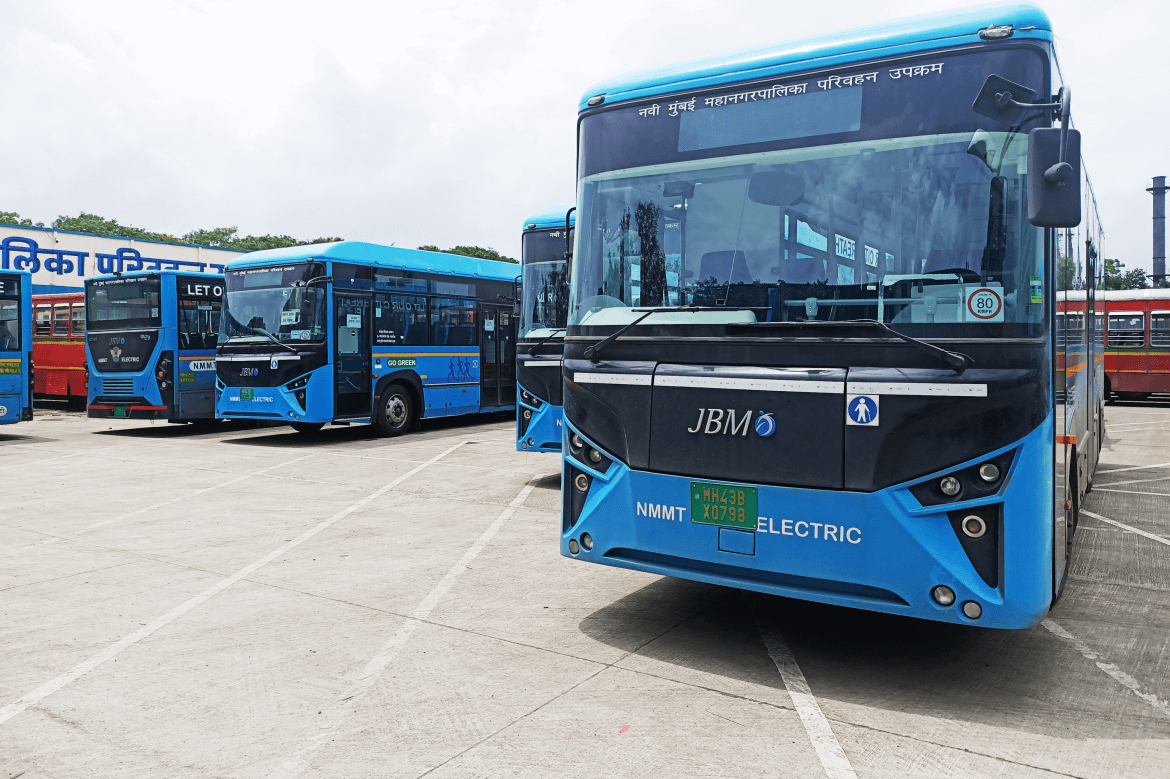Key Lessons for India’s Bus Electrification Drive

Convergence Energy Services Limited (CESL), supported by WRI India, recently concluded India’s biggest electric bus (e-bus) tender to deploy 5,450 e-buses across five cities: Bengaluru, Delhi, Hyderabad, Kolkata and Surat. This tender, based on a gross cost contracting (GCC) model and supported by FAME-II subsidy, led to the discovery of lowest ever rates for e-bus operations in Indian cities, up to 48% lower than those from previous tenders. Key factors that facilitated this reduction in costs were economies of scale, demand homogenization, higher assured utilisation, lower bank guarantee costs and penalty caps, clarity on work scope, longer concession periods, better payment terms, and opportunity charging facilitation.
Acknowledging its success, the government now intends to procure 50,000 e-buses by 2030 through CESL. As subsidies reduce, e-buses need to become more financially competitive than internal combustion engine buses. To that end, the following recommendations may be pivotal in facilitating greater success:
- Alternate business model: Transit operations are not a core business function of e-bus manufacturers. Hence, the criterion for the formation of an operator consortium must be relaxed to not just mandate manufacturer participation but also allow a wider gamut of bus operators to participate. This can enable successful bidders to negotiate bus prices better once the bidding is closed. This will also enable separate risks in owning and operating e-buses. Furthermore, the risks involved in the financing of e-buses (with associated infrastructure) and their operations will also get segregated. This will lower the cost of financing fixed assets like toll road annuities. Procuring e-buses from manufacturers separately through dry or wet lease agreements will catalyse homogenisation and aggregation in e-bus procurement and allow transit agencies to better utilise their driving staff.
- Holistic program management and payment securitization: The responsibilities of CESL, the program manager of the latest e-bus tender, ends with e-bus deployment. CESL can consider taking up independent services during the concession period such as overseeing or rationalizing work scope changes and adjudicating disputes. This will lead to faster and better decision-making and help reduce disputes and service disruptions. CESL’s latest tender does not objectively enhance payment security as an operator’s payment is made directly by the transit agency, thereby exposing the operator to financial risks stemming from the cash deficit nature of transit operations. This can be abated by emulating the solar energy contracting structure wherein the Solar Energy Corporation of India (SECI, a central government-owned AAA-rated entity) signs consecutive contracts with power producers and buyers, to ensure timely payments for power producers.
- Removing subsidy bank guarantee: The operators can be given the option of receiving subsidy in 60 monthly instalments which will remove the current requirement of bank guarantees. The subsidy may be retained by the program manager and disbursed to operators with accrued interest. This will increase availability of debt funding, reduce equity requirements, and decrease bank guarantee costs.
- Longer contract period: To fully utilise the life of an e-bus, especially that of replacement batteries, increasing primary contract period from 10-12 years to 15-16 years should be considered. Splitting bus leasing and operating contracts will also help in this regard.
- Improving termination payments: Since the transit agency receives possession of assets in case of pre-mature termination, the subsidy need not be adjusted from the termination payment (as specified in the CESL tender) because the operator ceases to possess the subsidised assets. The termination payments due to non-political force majeure (unforeseeable circumstances) and operator default are identical, which increases the risk exposure of an operator and should be altered.
- Modified fee escalation formula: An operator’s fee, as per the Grand Challenge tender, will be raised annually by 2%. While this ensures consistent annual growth of the operator’s fee, such growth may fail to compensate for increase in input costs stemming from inflation. Hence, a formula linking various components of the fee to related indices (wholesale price index, etc.) should be considered alongside a standard year-on-year increment.
Incorporating these measures into aggregated e-bus procurement frameworks can further lower procurement costs by reducing risk perception of e-bus contracts and enhancing service delivery efficacies.
Sutanu Pati is a part-time consultant with the Sustainable Cities and Transport program at WRI India.
Views are personal.
About TUMI
Transformative Urban Mobility Initiative (TUMI) is the leading global implementation initiative on sustainable mobility formed through the union of 11 prestigious partners. TUMI supports transport projects all around the world and enables policymakers to transform urban mobility. TUMI supports innovative pilot projects around the world and shares knowledge with planners about modern mobility concepts. earn more about TUMI at: About | (TUMI) (transformative-mobility.org)
About TUMI E-Bus Mission
The TUMI E-Bus Mission is working with six global partners in 20 deep-dive cities to dramatically advance electric bus adoption across leading cities in the Global South. This mission is part of the Action Towards Climate Friendly Transport (ACT) initiative and TUMI, and is supported by the Federal Ministry for Economic Cooperation and Development (BMZ). Learn more about TUMI e-Bus Mission at: https://bit.ly/3pLcSN4
TUMI E-Bus Mission
